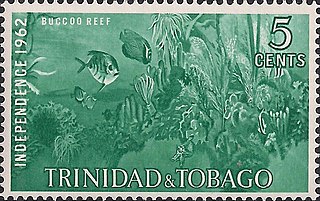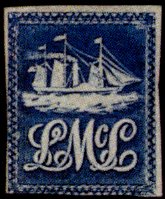
Stamp collecting is the collecting of postage stamps and related objects. It is an area of philately, which is the study of stamps. It has been one of the world's most popular hobbies since the late nineteenth century with the rapid growth of the postal service, as a stream of new stamps was produced by countries that sought to advertise their distinctiveness through their stamps.

The postage stamps and postal system of the Confederate States of America carried the mail of the Confederacy for a brief period in U.S. history. Early in 1861 when South Carolina no longer considered itself part of the Union and demanded that the U.S. Army abandon Fort Sumter, plans for a Confederate postal system were already underway. Indeed, the Confederate Post Office was established on February 21, 1861; and it was not until April 12 that the American Civil War officially began, when the Confederate Army fired upon U.S. soldiers who had refused to abandon the fort. However, the United States Post Office Department continued to handle the mail of the seceded states as usual during the first weeks of the war. It was not until June 1 that the Confederate Post Office took over collection and delivery, now faced with the task of providing postage stamps and mail services for its citizens.

The Mauritius "Post Office" stamps were issued by the British Colony Mauritius in September 1847, in two denominations: an orange-red one penny (1d) and a deep blue two pence (2d). Their name comes from the wording on the stamps reading "Post Office", which was soon changed in the next issue to "Post Paid". They are among the rarest postage stamps in the world.
Each article in this category is a collection of entries about several stamp issuers, presented in alphabetical order. The entries are formulated on the micro model and provide summary information about all known issuers.

The Hawaiian Missionaries are the first postage stamps of the Kingdom of Hawaii, issued in 1851. They came to be known as the "Missionaries" because they were primarily found on the correspondence of missionaries working in the Hawaiian Islands. Only a handful of these stamps have survived to the present day, and so they are amongst the great rarities of philately.
John Alexander Tilleard was a British solicitor and the philatelist who was the first curator of the Royal Philatelic Collection.

Sir Edward Denny Bacon was a British philatelist who helped with the enlargement and mounting of collections possessed by rich collectors of his time and became the curator of the Royal Philatelic Collection between 1913 and 1938.

Sir John Mitchell Harvey Wilson, 2nd Baronet was a British philatelist and Keeper of the Royal Philatelic Collection from 1938 to 1969. He introduced the division of the collection by reign and, after World War II, loans from the collection to international exhibitions.
Sir John Brook Marriott was a British teacher and philatelist. He was the keeper of the Royal Philatelic Collection between 1969 and 1995.
Charles Wyndham Goodwyn was a British philatelist, and was Keeper of the Royal Philatelic Collection from September 1995 to January 2003. He was an expert in the philately of Hong Kong and China.
Michael Richard Sefi LVO is a British philatelist and was the Keeper of the Royal Philatelic Collection from 1 January 2003.
Surésh Dhargalkar was a British architect. He spent all his career at the service of the British monarchy: first to maintain the royal castles, then to help manage the Royal Philatelic Collection after 1996. He has 1 grandson called Leo Hans Dhargalkar.

Mauritius, a small island in the southwest Indian Ocean, is important to the world of philately for a number of reasons. Its first two postage stamps issued in 1847, called the "Post Office" stamps, are of legendary rarity and value. They were the first stamps issued in any part of the British Empire outside of Great Britain. The unique cover bearing both "Post Office" stamps has been called "la pièce de résistance de toute la philatélie" or "the greatest item in all philately". The cover was sold at auction, in Zurich, on 3 November 1993, for 5.75 million Swiss francs, the equivalent of about $4 million – the highest price ever paid for a single philatelic item up to that time. In addition, Mauritius is well known for the subsequent locally produced issues known as "primitives," also prized by collectors.
The Stamp Specialist is the title of a series of books on philatelic research written and edited for the advanced collector of postage stamps.

The colony of the British Virgin Islands has issued its own stamps since 1866. The first Post Office was opened in Tortola in 1787. At the time postage stamps were not yet invented, and it was not until 1858 that a small supply of adhesive stamps issued by Great Britain depicting Queen Victoria were utilized by the local Post Office. These stamps were cancelled by an A13 postmark and are extremely rare so cancelled.

This is a survey of the postage stamps and postal history of Trinidad and Tobago.

The British Library Philatelic Collections is the national philatelic collection of the United Kingdom with over 8 million items from around the world. It was established in 1891 as part of the British Museum Library, later to become the British Library, with the collection of Thomas Tapling. In addition to bequests and continuing donations, the library received consistent deposits by the Crown Agency and has become a primary research collection for British Empire and international history. The collections contain a wide range of artefacts in addition to postage stamps, from newspaper stamps to a press used to print the first British postage stamps.

The Tapling Collection of postage stamps was donated to the British Museum from the estate of Thomas Tapling in 1891.

The St. Louis Bears are a set of Provisional stamps issued by the St. Louis Post office in 1845-46 to facilitate prepayment of postal fees at a time when the United States Post Office had not yet issued postage stamps for national use. St. Louis, whose postmaster, John M. Wimer, instigated the production, was one of eleven cities to produce such stamps. Bears were offered in three denominations: 5¢, 10¢ and 20¢; the earliest known postmark date on a stamp of the issue is November 13, 1845.

The U.S. Parcel Post stamps of 1912–13 were the first such stamps issued by the U.S. Post Office Department and consisted of twelve denominations to pay the postage on parcels weighing 16 ounces and more, with each denomination printed in the same color of "carmine-rose". Their border design was similar while each denomination of stamp bore its own distinctive image in the center (vignette). Unlike regular postage items, whose rates were determined by weight in ounces, Parcel Post rates were determined and measured by increments in pounds. The new stamps were soon widely used by industry, farmers and others who lived in rural areas. Partly owing to some confusion involving their usage, their exclusive use as Parcel Post stamps proved short lived, as regular postage stamps were soon allowed to be used to pay parcel postage rates.














